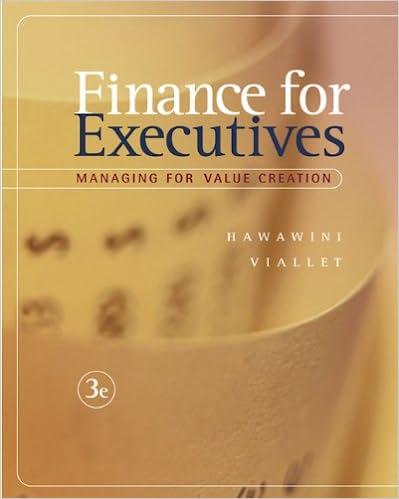Question
7.1 Distinguish between historical return and expected return. 7.2 How is expected return for one security determined? For a portfolio? 7.3 The Markowitz approach is
7.1 Distinguish between historical return and expected return. 7.2 How is expected return for one security determined? For a portfolio? 7.3 The Markowitz approach is often referred to as a mean-variance approach. Why? 7.4 How would the expected return for a portfolio of 500 securities be calculated? 7.5 What does it mean to say that portfolio weights sum to 1.0 or 100 percent? 7.6 What are the boundaries for the expected return of a portfolio? 7.7 Investors have known for years that they should not put all their eggs in one basket. How does the Markowitz analysis shed light on this old principle? 7.8 Evaluate this statement: With regard to portfolio risk, the whole is not equal to the sum of the parts. 7.9 How many, and which, factors determine portfolio risk? 7.10 What is the relationship between the correlation coefficient and covariance, both qualitatively and quantitatively? 7.11 How many covariance terms would exist for a portfolio of 10 securities using the Markowitz analysis? How many unique covariances? 7.12 How many total terms (variances and covariances) would exist in the variancecovariance matrix for a portfolio of 30 securities? How many of these are variances, and how many covariances? 7.13 When would a stock with a large standard deviation be desirable in building a portfolio? 7.14 Evaluate the following statement: As the number of securities held in a portfolio increases, the importance of each individual securitys risk decreases. 7.15 Should investors generally expect positive correlations between stocks and bonds? Bonds and bills? Stocks and real estate? Stocks and gold? 7.16 What are the inputs for a set of securities using the Markowitz model? 7.17 Evaluate this statement: For any two-stock portfolio, a correlation coefficient of 1.0 guarantees a portfolio risk of zero. 7.18 Agree or disagree with this statement: The variance of a portfolio is the expected value of the squared deviations of the portfolios returns from its mean return. 7.19 Evaluate this statement: Portfolio risk is the key issue in portfolio theory. It is not a weighted average of individual security risks. 7.20 Agree or disagree with these statements: There are n2 terms in the variancecovariance matrix, where n is the number of securities. There are n(n 1) total covariances; divide by two to obtain the number of unique covariances. 7.21 Holding a large number of stocks ensures an optimal portfolio. Agree or disagree and explain your reasoning. 7.22 Suppose you are considering a stock fund and a bond fund and determine that the covariance between the two is 179. Does this indicate a strong negative relationship
Step by Step Solution
There are 3 Steps involved in it
Step: 1

Get Instant Access to Expert-Tailored Solutions
See step-by-step solutions with expert insights and AI powered tools for academic success
Step: 2

Step: 3

Ace Your Homework with AI
Get the answers you need in no time with our AI-driven, step-by-step assistance
Get Started


